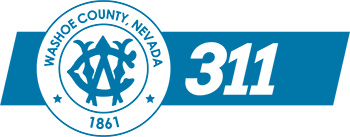Washoe County’s Pavement Preservation Program
Whether trips are taken by automobiles, transit, bicycle or walking, everyone benefits when the streets are maintained in a safe and serviceable condition. The RTC in cooperation with the Public Works Departments of Reno, Sparks and Washoe County implements a comprehensive Pavement Preservation Program.
The purpose of the Pavement Preservation Program is to maintain roads in good condition and minimize long term costs. The goal is to apply the most cost effective treatment to the right pavements, at the right time to minimize pavement life cycle costs while maximizing serviceable pavement life. An effective Pavement Preservation Program saves money that can be used for other important transportation initiatives. Through a process of collaboration and coordination with the local governments, RTC funds tactical roadway preservation programs to accomplish goals for the Regional Road System (arterials, collectors, industrial roads). The local governments provide preservation services for non-regional road roadways and day to day maintenance for all non-state maintained facilities. As part of the pavement preservation system RTC maintains data on index rating for each regional road. Programs are developed for roadway preservation primarily through two processes.
First, the Regional Pavement Management Systems (PMS) is used by RTC and the local governments to create the Regional Pavement Preservation Program. The PMS provides the region a comprehensive regional assessment of roadway pavement assets, condition, and is a tool to prioritize preservation projects. The use of the Regional PMS gives RTC and the local governments the ability to provide the right treatments to the right pavements at the right time.
This proactive maintenance strategy relies on preventive and corrective maintenance methods to maintain good pavements in good condition as its primary focus, in turn; this slows the rate of pavements falling into poor condition which require costly major reconstruction. It is six to 10 times cheaper to properly maintain streets than to allow them to fail and pay for costly reconstruction treatments. RTC’s Regional Pavement Preservation Program has significantly improved driving conditions and reduced the region’s backlog of pavement reconstruction needs. Since initiation of the program the average Pavement Condition Index (PCI) for all roadways (excluding NDOT maintained roads) has been raised above the goal of 70 to 76. Nine percent of the regional network is in poor condition (PCI below 50).
The RTC’s Pavement Preservation Program is central to implementation of Complete Streets strategies. Through the preventative maintenance slurry seal program, RTC is narrowing travel lanes, adding bicycle lanes, and in some cases eliminating travel lanes. The effects of these Complete Streets strategies are to slow traffic to the designated posted speed, reduce vehicle crashes, and provide a safe space for other non-auto users. Crash reductions ranging from 25-45 percent have been documented on regional roads that have undergone these reconfigurations.
The program is implemented in coordination with the Pavement Preservation Committee, which consists of public works and maintenance staff of Reno, Sparks, and Washoe County. The committee meets monthly with a focus on:
- Maintaining an integrated Regional PMS to insure pavement assets are current, and inspected regularly and consistently throughout the region.
- Develop the Pavement Preservation Program to insure the right treatments are provided to the right pavements at the right time; including a Preventive and Corrective Maintenance Program to keep good pavements in good repair.
- Development of the Pavement Preservation project selection process, utilizing data from the Regional PMS to insure projects are selected on a needs-based system.
- Discussion of general issues to improve service and processes.
Early coordination on actions to be considered at the RTC TAC meetings.
